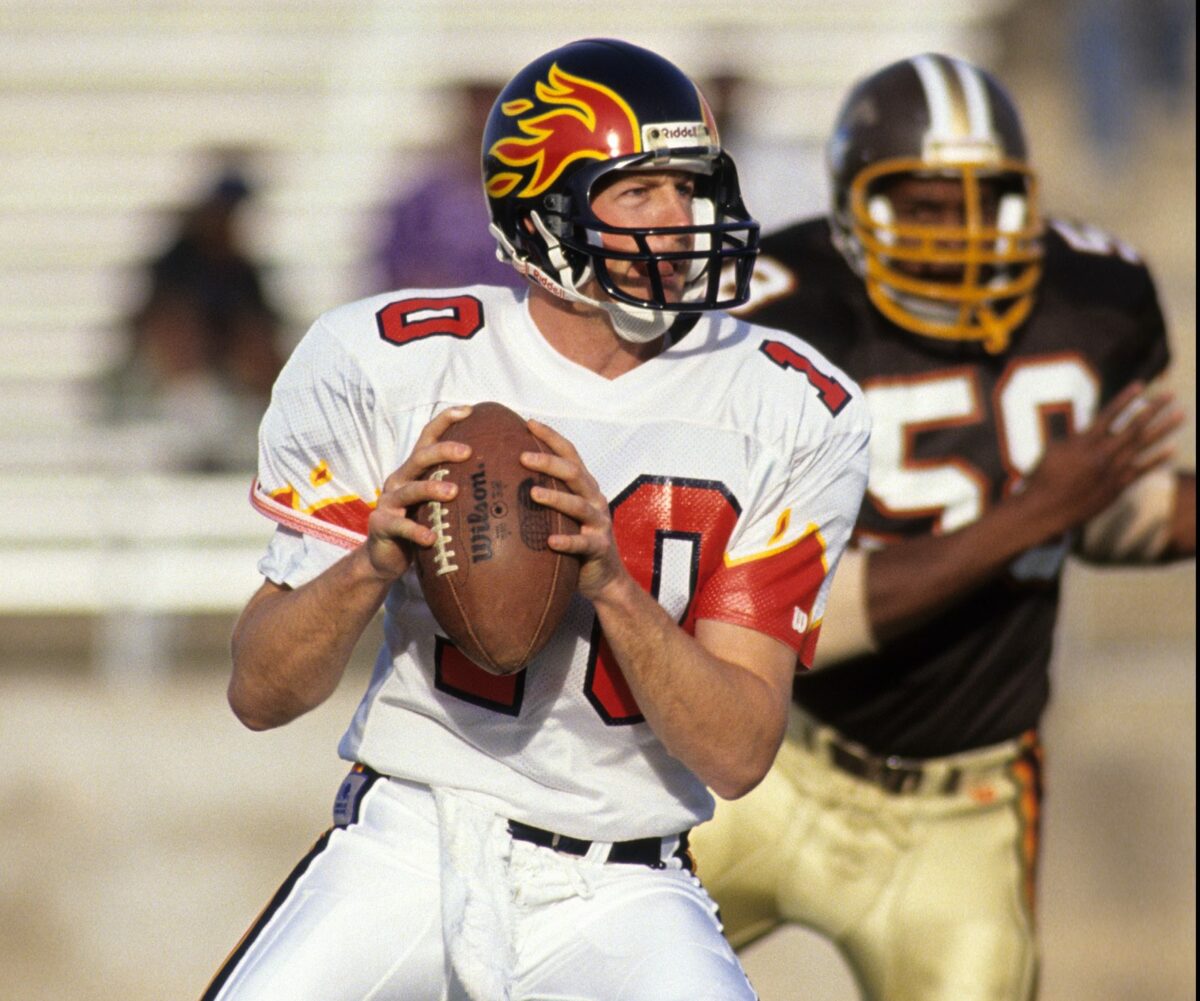The NFL International Series is expanding its base. From 2022 to 2025, it will make annual visits to the home country of the Frankfurt Galaxy.
The league announced plans to send regular season games to Germany over the next four seasons, starting in Munich and expanding out to Frankfurt. Next year’s game in Deutschland will be one of five played outside the United States, including three in the United Kingdom and one in Mexico.
“We are very pleased to welcome Munich and Frankfurt to the NFL family and are excited to reward our fans in Germany for their passion by bringing them the spectacle of regular-season NFL football,” NFL Commissioner Roger Goodell said in a statement. “We look forward to staging our first game in Germany at FC Bayern Munich’s fantastic stadium later this year and to exploring areas of broader collaboration with the Bundesliga.”
What that statement ignored, however, was the groundwork that laid the foundation for American football to grow in Germany. That was the World League of American Football (WLAF), which later became NFL Europe.
The WLAF began life in 1991 as a typical failure of a spring football league, backed by the NFL itself as a potential feeder to the big stage. Its hook, however, was a global expansion of the game. It settled down in standard ports for disinterested warm weather gridiron fans — Birmingham, AL, Orlando, and San Antonio foremost among them — and countries that only knew football from late-night Super Bowl broadcasts. There were three teams spaced across Europe:
- Frankfurt Galaxy
- Barcelona Dragons
- London Monarchs
The WLAF was roughly as successful as the Canadian Football League’s expansion into America. It lasted only two seasons in its original form. By 1993 it was on hiatus. It wouldn’t return until 1995 — and even then without any teams stateside. The Germans got a second team in Dusseldorf. Amsterdam and Edinburgh also earned franchises. By 1998, the entire league was known as NFL Europe.
It wasn’t a success. The UK-based clubs alternated between home fields repeatedly and failed to garner a stable fan base. The Monarchs closed up shop after ’98. The Dragons made it until 2003.
However, the concept of minor league football worked in Germany, the country with the highest concentration of American military personnel in the continent. By 2005, five of the league’s six franchises hailed from the nation that gave the world Oktoberfest. Between them, they averaged more than 21,000 fans per game. The Galaxy, with more than 30k in the stands every home game, led the way.
All 12 of the World Bowls played after 1992 to crown a WLAF/NFL Europe/NFL Europa champion involved at least one team from Germany. The final World Bowl, between Frankfurt and the Hamburg Sea Devils, drew nearly 50,000 spectators.
The feeder league shut down after the 2007 season. It’s legend coursed through Germany like the Baltimore Colts’ marching band waiting fervently for pro football to return. Fans in Frankfurt founded the Universe; a fifth-tier club that eventually won its way up to the highest-level German Football League and was runner-up in the 2018 German Bowl.
The European League of Football, a 2021 12-team start-up in which seven clubs are based in Germany, has carried the banner as well. Through a licensing agreement with the NFL, they’ve restored the names and imagery of the Galaxy, Sea Devils, Rhein Fire, Berlin Thunder, Cologne Centurions, and even the Barcelona Dragons. Even though the league shut down 15 years ago, NFL Europe has retained its presence in the middle of the continent.
Now the league is rewarding that faith with a regular season game that typically pits two bottom feeding teams against each other. It’s a smart bet.
The NFL once drew 48,000 fans to a German soccer pitch to watch Casey Bramlet throw passes against JT O’Sullivan. Fans there will go wild for Zach Wilson and Justin Fields.
[mm-video type=video id=01fvg7ps8vy99bjfed2y playlist_id=none player_id=none image=]
[listicle id=1842377]
